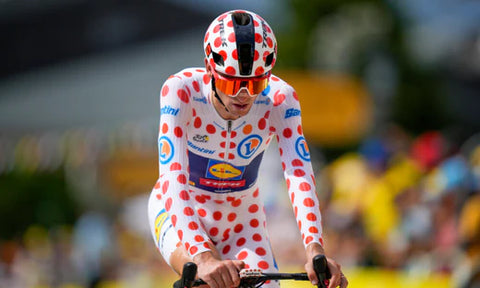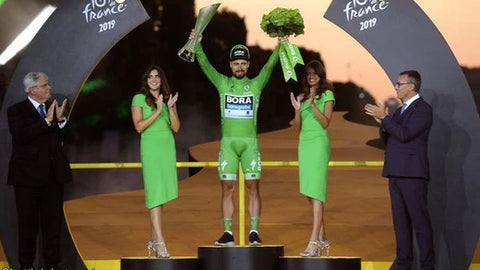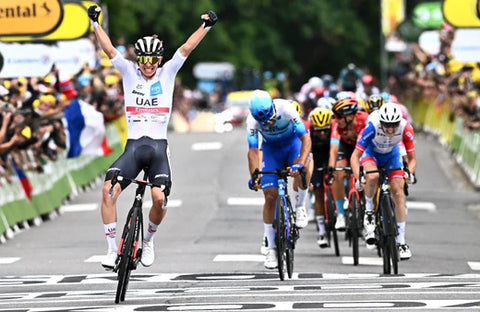The 4 jerseys of the Tour de France
The jerseys of the Tour de France combine style and history: a Yellow, a White, a Green, and the Polka-dot. Each of these has a meaning that is reflected in the race. Let’s discover together their distinctive features :
- Yellow Jersey
The yellow jersey of the Tour de France is the symbol of the leader of the general classification, that is the cyclist who has covered the Tour in the least possible time.
The yellow jersey was introduced in 1919 and its color is inspired by the pages of the newspaper "The Car", which organized the race.

The record of victories in yellow jersey is shared by four cyclists: Jacques Anquetil, Eddy Merckx, Bernard Hinault and Miguel Indurain, who won the Tour five times each.
- Polka dot jersey
The polka dot jersey in the Tour de France is worn by the best climber of the competition. This shirt is often called "maillot à pois rouges" in French
It is assigned to the runner which accumulates the highest number of points by climbing the mountains during the uphill stages.

The polka dot jersey was introduced in 1933 and has become an iconic symbol of the Tour de France being worn by riders known for their climbing and endurance skills on the mountains. Winning this ranking is a great honor for grimpeur riders : it is a coveted prize for cyclists who excel in the most demanding ascents of the Tour de France and is considered one of the most prestigiousjerseys in the competition.
- Green Jersey
The green jersey of the Tour de France is the one worn by the leader of the points classification and is based on the placements obtained in the single stages.
This ranking takes into account the performance of cyclists in flat stages and sprints, where points are awarded to the first riders to cross the finish line.
In this sense, those who wear the green jersey tend to be the best sprinter of the Tour de France.

The green colour was chosen in reference to the first sponsor, À la Belle Jardinière, who launched the shirt for the first time in 1953. It has become an iconic symbol of the Tour de France.
The green jersey is sponsored by several brands over the years, which means that its design can vary from year to year, but the green color has remained constant.
For many runners, the conquest of the green jersey is an important goal, along with the yellow jersey for the overall leader.
However, runners specializing in sprints and flat stages tend to compete for this ranking.
- White Jersey
The white jersey in the Tour de France is worn by the best young runner of the competition.
This jersey is known as the "maillot blanc" in French and is intended for runners under 25 years who have achieved the best overall time in the race.
The white jersey is a form of recognition for the young talented participating in the Tour de France, offering them the opportunity to compete among their peers and demonstrate their skills.

Many riders who have worn the white jersey have later become running champions.
- History of the Tour de France
The Tour de France is one of the most prestigious and well-known road cycling races in the world. Here is a short story:
The first edition saw 60 cyclists participate and cover a distance of about 2,428 kilometers.
Some stages and climbs have become famous, such as Alpe d'Huez and Mont Ventoux.
Every year, cycling enthusiasts look forward to the three weeks of intense cycling action this ride offers.
